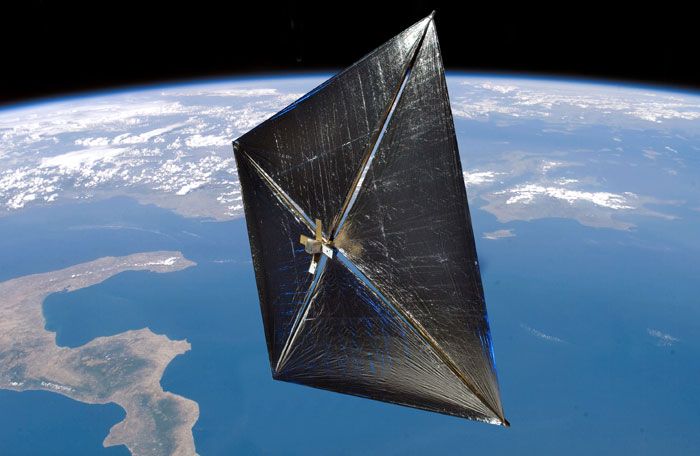
NASA
BETTER LATE THAN NEVER... Deployment was originally suppose to occur early last month.
****
NASA's First Solar Sail NanoSail-D Deploys in Low-Earth Orbit (Press Release - January 21)
HUNTSVILLE, Ala. – Friday, Jan. 21 at 10 a.m. EST, engineers at NASA's Marshall Space Flight Center in Huntsville, Ala., confirmed that the NanoSail-D nanosatellite deployed its 100-square-foot polymer sail in low-Earth orbit and is operating as planned. Actual deployment occurred on Jan. 20 at 10 p.m. EST and was confirmed today with beacon packets data received from NanoSail-D and additional ground-based satellite tracking assets. In addition, the NanoSail-D orbital parameter data set shows an appropriate change which is consistent with sail deployment.
"This is tremendous news and the first time NASA has deployed a solar sail in low-Earth orbit," said Dean Alhorn, NanoSail-D principal investigator and aerospace engineer at the Marshall Center. "To get to this point is an incredible accomplishment for our small team and I can't thank the amateur ham operator community enough for their help in tracking NanoSail-D. Their assistance was invaluable. In particular, the Marshall Amateur Radio Club was the very first to hear the radio beacon. It was exciting!"
NanoSail-D will continue to send out beacon signals until the onboard batteries are expended and can be found at 437.270 MHz. It can be tracked on the NanoSail-D dashboard at: http://nanosaild.engr.scu.edu/dashboard.htm.
It is estimated that NanoSail-D will remain in low-Earth orbit between 70 and 120 days, depending on atmospheric conditions. NanoSail-D is designed to demonstrate deployment of a compact solar sail boom technology. This research demonstration could lead to further advances of this alternative solar sail propulsion and the critical need for new de-orbit technologies. This ejection experiment also demonstrates a spacecraft’s ability, like the Fast, Affordable, Science and Technology Satellite, or FASTSAT, to eject a nano-satellite from a micro-satellite, while avoiding re-contact with the primary satellite.
"This is a significant accomplishment for both the FASTSAT and NanoSail-D projects. This accomplishment validates that we've met another of our primary mission objectives -- successfully ejecting a nanosatellite from an orbiting microsatellite," said Mark Boudreaux, FASTSAT project manager at the Marshall Center. "This is another significant accomplishment for our inter Agency, Industry and Governmental FASTSAT-HSV01 partnership team."
Source: NASA.Gov
****

NASA / Marshall Space Flight Center

No comments:
Post a Comment